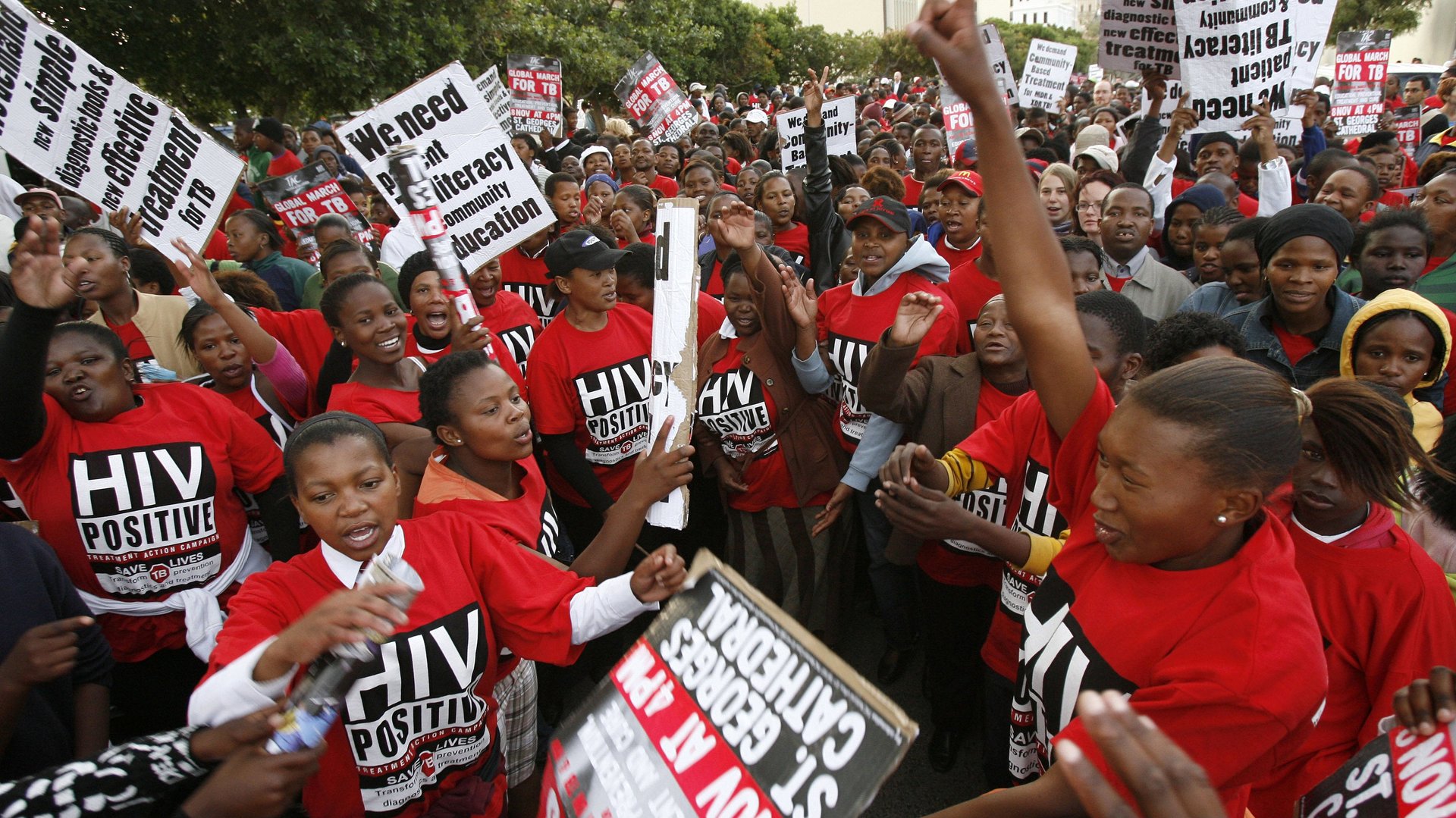In South Africa, this is the disease that demands our attention
CAPE TOWN, SOUTH AFRICA—No doubt you’ve heard there’s a disease about that is infectious, difficult to treat and that has an extremely high death rate.


CAPE TOWN, SOUTH AFRICA—No doubt you’ve heard there’s a disease about that is infectious, difficult to treat and that has an extremely high death rate.
It’s drug-resistant tuberculosis.
Several thousand people died from it in our country last year; more will likely die this year.
There were just over 54,000 recorded TB deaths in South Africa in 2011, the last year for which data are available. The actual number of TB deaths is probably much larger than this. It is by far the biggest single cause of death in the country, and it is exacerbated by the HIV epidemic. On the positive side, as more people with HIV have gone onto antiretroviral treatment, the number of TB deaths has declined; there were over 70,000 recorded deaths a year in the mid-2000s.
TB is spread when people sick with the disease cough and sneeze. We are exposed to it all the time. By the time kids on the Cape Flats have finished high school, 70% to 80% are infected with TB bacteria. We don’t know infection rates in affluent suburbs, but even there it is probably high. Most people infected with TB will however remain healthy. But people with compromised immune systems, whether because of HIV, poor nutrition, alcoholism, or because they are very young or old, are much more likely to become ill.
If you’re sick with TB, it’s usually curable with six-months of antibiotics. But a growing number of people are contracting drug-resistant TB that is very hard to cure. Over 10,700 patients were diagnosed in South Africa with drug-resistant TB last year but there are probably a large number of people with undiagnosed drug-resistance.
The drugs for treating drug-resistant TB have lousy evidence to support their effectiveness and they have terrible side-effects. Kanamycin, for example, causes deafness. Less than half of people diagnosed are successfully treated.
Two drugs, bedaquiline and linezolid, might improve this. Bedaquiline is new and linezolid has been around since the 1990s but has only recently been tested against TB.
The Medicines Control Council is about to approve bedaquiline, and clinicians and activists are calling on it to approve cheaper generic linezolid. Both drugs need more testing; there are some unanswered questions about their safety. But we know enough about them to say that patients with drug-resistant TB—who have a high chance of death—should be given an informed choice to take them. A third promising new drug, delamanid, might be available soon too. In all cases, pressure will have to be put on the manufacturers to keep their prices low.
I asked a number of clinicians what are the most important things we can do to combat the disease. There isn’t agreement on everything, but on one thing there is consensus: we have to reduce the number of new infections. We need to be tracing the contacts of people sick with TB—especially looking for infected children—and making sure they get treated. We have to improve infection control. Where and how this is to be done isn’t obvious. More research is needed.
And this will take money. Lots of it. But we’ve got to do it. TB is a neglected disease when it comes to research. Less than $700 million is spent on TB research worldwide annually, and that figure is decreasing. This is a fraction of what is spent on research for cancer, AIDS or the highly controversial US war on drugs. We can’t depend only upon the US to increase research into TB; our government must do it.
In North America and Europe, massive TB infection rates were brought down in the first half of the 20th century, even before antibiotics to treat TB became available. A myriad interventions were tried; collectively they appear to have worked. Treatment was the very important cherry on top.
In the early 1990s there was an outbreak of drug-resistant TB in New York City. It was tiny compared to what we see in South Africa. Nearly a billion dollars was spent to bring it under control. That is the kind of political will that’s needed to fight TB here.
Investing large amounts now to reverse the TB epidemic will likely save immense costs to the health system within several years. More importantly it will prevent a lot of illness and save many lives.
This post originally appeared at GroundUp.